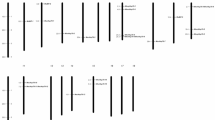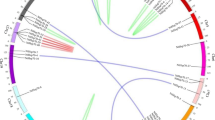Abstract
DNAJ proteins function as co-chaperones of HSP70 and play key roles in cell physiology to promote protein folding and degradation, especially under environmental stress. Based on our previous study on HSP70, a systematic study of DNAJ was performed in sea cucumber Apostichopus japonicus using the transcriptomic and genomic data, identifying 43 AjDNAJ genes, including six AjDNAJA genes, eight AjDNAJB genes, and 29 AjDNAJC genes. Slight expansion and conserved genomic structure were observed using the phylogenetic and syntenic analysis. Differential period-specific and tissue-specific expression patterns of AjDNAJs were observed between adult and juvenile individuals during aestivation. Strong tissue-specific expression correlations between AjDNAJ and AjHSP70 genes were found, indicating that the involvements of AjHSP70IVAs in the aestivation of sea cucumbers were regulated by AjDNAJs. Several key genes with significant expression correlations, such as AjDNAJB4L and AjHSP70IVAs, were suggested to function together under heat stress. Together, these findings provide early insight into the involvement of AjDNAJs in the aestivation and their roles as co-chaperones of AjHSP70s.






Similar content being viewed by others
References
Bailey TL, Boden M, Buske FA, Frith M, Grant CE, Clementi L, Ren J, Li WW, Noble WS (2009) MEME Suite: tools for motif discovery and searching. Nucleic Acids Res 37:W202–W208
Cheetham ME, Caplan AJ (1998) Structure, function and evolution of DnaJ: conservation and adaptation of chaperone function. Cell Stress Chaperon 3:28
Darriba D, Taboada GL, Doallo R, Posada D (2011) ProtTest 3: fast selection of best-fit models of protein evolution. Bioinformatics 27:1164–1165
Delport W, Poon AFY, Frost SDW, Kosakovsky Pond SL (2010) Datamonkey 2010: a suite of phylogenetic analysis tools for evolutionary biology. Bioinformatics 26:2455–2457
Dong C, Zhang Y, Zhang Q, Gui J (2006a) Differential expression of three Paralichthys olivaceus Hsp40 genes in responses to virus infection and heat shock. Fish Shellfish Immunol 21:146–158
Dong Y, Dong S (2008) Induced thermotolerance and expression of heat shock protein 70 in sea cucumber Apostichopus japonicus. Fisheries Sci 74:573–578
Dong Y, Dong S, Tian X, Wang F, Zhang M (2006b) Effects of diel temperature fluctuations on growth, oxygen consumption and proximate body composition in the sea cucumber Apostichopus japonicus Selenka. Aquaculture 255:514–521
Foster NL, Lukowiak K, Henry TB (2015) Time-related expression profiles for heat shock protein gene transcripts (HSP40, HSP70) in the central nervous system of Lymnaea stagnalis exposed to thermal stress. Commun Integr Biol 8:e1040954
Gao L, Yuan Z, Ma Z, Li Z, Yu S, Li Y, He C (2019) Genome-wide comparative analysis of the SHSP, HSP60/10 and HSP90 genes reveals differential heat stress responses in estivation of the sea cucumber Apostichopus japonicus. Aquac Res 50:1117–1130
Gao L, Yuan Z, Yu S, Yang Y, Li Y, He C (2018) Genome-wide identification of HSP70/110 genes in sea cucumber Apostichopus japonicus and comparative analysis of their involvement in aestivation. Comp Biochem Physiol Part D Genomics Proteomics 28:162–171
Giraud-Billoud M, Vega IA, Tosi MER, Abud MA, Calderón ML, Castro-Vazquez A (2013) Antioxidant and molecular chaperone defences during estivation and arousal in the South American apple snail Pomacea canaliculata. J Exp Biol 216:614–622
Hennessy F, Cheetham ME, Dirr HW, Blatch GL (2000) Analysis of the levels of conservation of the J domain among the various types of DnaJ-like proteins. Cell Stress Chaperon 5:347
Jingzhi L, Bingdong S (2005) Structure-based mutagenesis studies of the peptide substrate binding fragment of type I heat-shock protein 40. Biochem J 386:453–460
Kampinga HH, Hageman J, Vos MJ, Kubota H, Tanguay RM, Bruford EA, Cheetham ME, Chen B, Hightower LE (2009) Guidelines for the nomenclature of the human heat shock proteins. Cell Stress Chaperon 14:105–111
Koziol C, Batel R, Arinc E, Schröder HC, Müller WE (1997) Expression of the potential biomarker heat shock protein 70 and its regulator, the metazoan DnaJ homolog, by temperature stress in the sponge Geodia cydonium. Mar Ecol Prog Ser 154:261–268
Kumar M, Mitra D (2005) Heat shock protein 40 is necessary for human immunodeficiency virus-1 Nef-mediated enhancement of viral gene expression and replication. J Biol Chem 280:40041–40050
Kumar S, Stecher G, Tamura K (2016) MEGA7: molecular evolutionary genetics analysis version 7.0 for bigger datasets. Mol Biol Evol 33:1870–1874
Letunic I, Doerks T, Bork P (2012) SMART 7: recent updates to the protein domain annotation resource. Nucleic Acids Res 40:D302–D305
Li J, Qian X, Sha B (2009) Heat shock protein 40: structural studies and their functional implications. Protein Peptide Lett 16:606–612
Li J, Zhang Y, Liu Y, Zhang Y, Xiao S, Yu Z (2016) Co-expression of heat shock protein (HSP) 40 and HSP70 in Pinctada martensii response to thermal, low salinity and bacterial challenges. Fish Shellfish Immunol 48:239–243
Liu Y, Li F, Song B, Sun H, Zhang X, Gu B (1996) Study on aestivating habit of sea cucumber Apostichopus japonicus Selenka: ecological characteristics of aestivation. J Fish Sci China 3:41–48
Loong A, Hiong K, Wong W, Chew S, Ip Y (2012) Differential gene expression in the liver of the African lungfish, Protopterus annectens, after 6 days of estivation in air. J Comp Physiol B 182:231–245
Luu BE, Wijenayake S, Malik AI, Storey KB (2018) The regulation of heat shock proteins in response to dehydration in Xenopus laevis. Cell Stress Chaperon 23:45–53
Malik AI, Storey KB (2009) Activation of antioxidant defense during dehydration stress in the African clawed frog. Gene 442:99–107
Malik AI, Storey KB (2011) Transcriptional regulation of antioxidant enzymes by FoxO1 under dehydration stress. Gene 485:114–119
Marchler-Bauer A, Derbyshire MK, Gonzales NR, Lu S, Chitsaz F, Geer LY, Geer RC, He J, Gwadz M, Hurwitz DI (2014) CDD: NCBI’s conserved domain database. Nucleic Acids Res 43:D222–D226
Ohtsuka K, Hata M (2000) Mammalian HSP40/DNAJ homologs: cloning of novel cDNAs and a proposal for their classification and nomenclature. Cell Stress Chaperon 5:98
Pesce E-R, Acharya P, Tatu U, Nicoll WS, Shonhai A, Hoppe HC, Blatch GL (2008) The Plasmodium falciparum heat shock protein 40, Pfj4, associates with heat shock protein 70 and shows similar heat induction and localisation patterns. Int J Biochem Cell Biol 40:2914–2926
Qiu X, Shao Y, Miao S, Wang L (2006) The diversity of the DnaJ/Hsp40 family, the crucial partners for Hsp70 chaperones. Cell Mol Life Sci 63:2560–2570
Ramnanan CJ, Storey KB (2006) Suppression of Na+/K+-ATPase activity during estivation in the land snail Otala lactea. J Exp Biol 209:677–688
Salway KD, Tattersall GJ, Stuart JA (2010) Rapid upregulation of heart antioxidant enzymes during arousal from estivation in the Giant African snail (Achatina fulica). Comp Biochem Physiol A Mol Integr Physiol 157:229–236
Solovyev V, Kosarev P, Seledsov I, Vorobyev D (2006) Automatic annotation of eukaryotic genes, pseudogenes and promoters. Genome Biol 7:S10
Song L, Zhang J, Li C, Yao J, Jiang C, Li Y, Liu S, Liu Z (2014) Genome-wide identification of Hsp40 genes in channel catfish and their regulated expression after bacterial infection. PloS one 9:e115752
Storey KB, Storey JM (2012) Aestivation: signaling and hypometabolism. J Exp Biol 215:1425–1433
Sun L, Xu D, Xu Q, Sun J, Xing L, Zhang L, Yang H (2017) iTRAQ reveals proteomic changes during intestine regeneration in the sea cucumber Apostichopus japonicus. Comp Biochem Physiol Part D Genomics Proteomics 22:39–49
Tan S, Yao J, Zhou T, Liu S, Yuan Z, Tian C, Li Q, Liu Z (2017) Identification, annotation and expression analysis of 29 Rho GTPase genes from channel catfish (Ictalurus punctatus) after bacterial infections. Dev Comp Immunol 67:445–451
Thompson JD, Gibson T, Higgins DG (2003) Multiple sequence alignment using ClustalW and ClustalX. Curr Protoc Bioinformatics 1:2–3
Vos MJ, Hageman J, Carra S, Kampinga HH (2008) Structural and functional diversities between members of the human HSPB, HSPH, HSPA, and DNAJ chaperone families. Biochemistry-Us 47:7001–7011
Xu Y, Zheng G, Liu G, Yang Q, Yu X (2019) Molecular cloning, characterization of Pomacea canaliculata HSP40 and its expression analysis under temperature change. J Therm Biol 81:59–65
Yan J, Burman A, Nichols C, Alila L, Showe LC, Showe MK, Boyer BB, Barnes BM, Marr TG (2006) Detection of differential gene expression in brown adipose tissue of hibernating arctic ground squirrels with mouse microarrays. Physiol Genomics 25:346–353
Yang H, Yuan X, Zhou Y, Mao Y, Zhang T, Liu Y (2005) Effects of body size and water temperature on food consumption and growth in the sea cucumber Apostichopus japonicus (Selenka) with special reference to aestivation. Aquac Res 36:1085–1092
Yang H, Zhou Y, Zhang T, Yuan X, Li X, Liu Y, Zhang F (2006) Metabolic characteristics of sea cucumber Apostichopus japonicus (Selenka) during aestivation. J Exp Mar Biol Ecol 330:505–510
Yuan X, Yang H, Wang L, Zhou Y, Zhang T, Liu Y (2007) Effects of aestivation on energy budget of sea cucumber Apostichopus japonicus (Selenka) (Echinodermata: Holothuroidea). Acta Ecol Sin 27:3155–3161
Zhang G, Fang X, Guo X, Li L, Luo R, Xu F, Yang P, Zhang L, Wang X, Qi H (2012) The oyster genome reveals stress adaptation and complexity of shell formation. Nature 490:49–54
Zhang G, Storey JM, Storey KB (2011) Chaperone proteins and winter survival by a freeze tolerant insect. J Insect Physiol 57:1115–1122
Zhang X, Sun L, Yuan J, Sun Y, Gao Y, Zhang L, Li S, Dai H, Hamel J-F, Liu C (2017) The sea cucumber genome provides insights into morphological evolution and visceral regeneration. PLoS Biol 15:e2003790
Zhao H, Yang H, Zhao H, Chen M, Liu S (2011) Heat stress-mediated gene expression in the body wall of the Japanese sea cucumber Apostichopus japonicus. Aquat Biol 12:23–31
Zhou T, Li N, Liu S, Jin Y, Fu Q, Gao S, Liu Y, Liu Z (2017) The NCK and ABI adaptor genes in catfish and their involvement in ESC disease response. Dev Comp Immunol 73:119–123
Funding
This research was supported by the National Key R&D Program of China (2019YFD0901002), the Natural Science Foundation of Liaoning Province (2019-ZD-0725), the Key Special Project for Introduced Talents Team of Southern Marine Science and Engineering Guangdong Laboratory (Guangzhou) (GML2019ZD0402), Dalian Qing Nian Ke Ji Zhi Xing Program (2018RQ20), the National Natural Science Foundation of China (Grant No. 31602155), the Liaoning BaiQianWan Talents Program (2018921039), and the Science and Technology Innovation Fund of Dalian (2021JJ13SN73).
Author information
Authors and Affiliations
Contributions
L.G. and Z.M. designed the project. L.G. and Y.L. collected the samples. L.G. and Z.Y. participated in data analyses. L.G. and Z.M. wrote the manuscript. All authors have read and approved the final manuscript.
Corresponding authors
Ethics declarations
Conflict of interest
The authors declare no competing interests.
Additional information
Publisher's note
Springer Nature remains neutral with regard to jurisdictional claims in published maps and institutional affiliations.
Supplementary Information
Below is the link to the electronic supplementary material.
Rights and permissions
About this article
Cite this article
Gao, L., Yuan, Z., Li, Y. et al. Genome-wide comparative analysis of DNAJ genes and their co-expression patterns with HSP70s in aestivation of the sea cucumber Apostichopus japonicus. Funct Integr Genomics 22, 317–330 (2022). https://doi.org/10.1007/s10142-022-00830-2
Received:
Revised:
Accepted:
Published:
Issue Date:
DOI: https://doi.org/10.1007/s10142-022-00830-2




